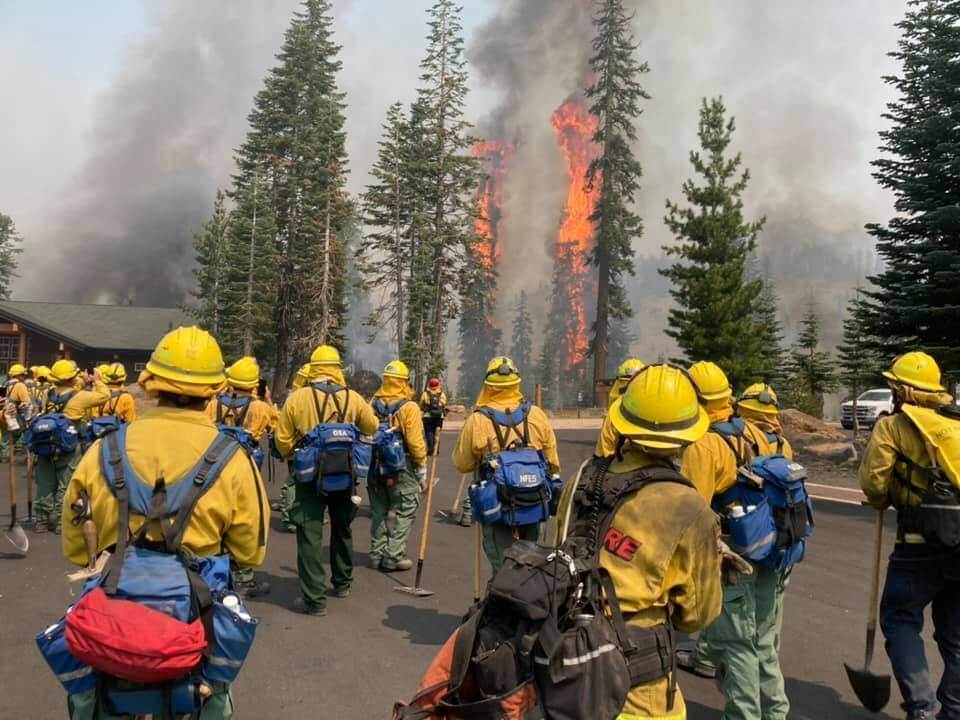Following the blazing summer wildfires in the West, the Department of Defense extended its FireGuard program to assist agencies battling the heat.
FireGuard is an interagency partnership between the DOD and fire-management agencies to detect wildfires and monitor fire progression in the U.S. that began as a state funded program in California in 2019 and Colorado in 2020.
Peter Vidmar, civilian lead and commanding staff member of Colorado’s Task Force FireGuard, said the program’s purpose is to provide fire managers at all levels with critical intelligence on fire location, activity and values at risk, as well as other information, such as jurisdiction, land ownership and weather.
RELATED: Soldier finds service opportunities outside of the uniform in disaster response
That work, he said, is conducted by National Guard analysts who receive data from multiple sources and produce polygons on the area they assess to be impacted by fire. These polygons and associated fire information are then distributed to firefighters via several geospatial applications.
Following success at the state level, the National Interagency Fire Center “initiated a request for assistance” (RFA) to DOD for the program to expand nationwide, according to Vidmar. And in October 2020, that expansion took place.
‘Unprecedented fire conditions’ across U.S.
That same request was recently extended through the end of fiscal year 2022, ending in September next year. However, Vidmar said the FireGuard team and its partners are working to secure necessary approvals to make the program permanent.
“With unprecedented fire conditions across the country, and the general trend of fires growing larger and faster than in years past, it is more important than ever that fire managers have good and timely information to make decisions,” he said. “…While FireGuard does sometimes provide the first notification of a fire to dispatch centers, the goal is to provide the first correct information.”
Capt. Kathryn Nay, of the Task Force FireGuard at Buckley Space Force Base, said FireGuard analysts have provided information on more than 1,300 fires in the past five months.
“The information our analysts are able to provide to the fire community has the potential to revolutionize the way wildfires are monitored and fought,” Nay said.
FireGuard program serves communities
While the analysts don’t fight fires directly, they help community firefighters beat the blaze before it engulfs land, towns and families.
“We joined the Guard to serve our communities, state and nation,” Nay said. “The FireGuard program is one of many Guard missions which simultaneously allows us the opportunity to perform a domestic mission while also better preparing us to perform our federal missions when called upon.”
In fact, Guard members from 19 states logged 155,108 days responding to 52,834 wildfires covering over 9.5 million acres in 2020, according to the National Guard Bureau.
DOD extending the RFA is “critical,” Vidmar said. Not only would a lack of extension have ended the program at midnight on Oct. 1, but the continuation allows its momentum from the past two seasons to continue.
“The service members on mission also serve analysts in their occupational specialties for their home Guard units,” Vidmar said. “It can be challenging for them to exercise their training and skills in real-world missions, and FireGuard provides the repetitions needed for them to maintain and further hone their knowledge, skills and abilities that support their warfighting function.”
Vidmar felt a sense of relief once notified of the program’s extension for another year, but he knows the Guard will have to repeat the process again.
“Given the positions taken by some at the Pentagon expressing their desire for the National Guard to be removed from the program,” he said, “it increases the sense of urgency to find solutions in the next year that will continue to allow the Guard to support.”

